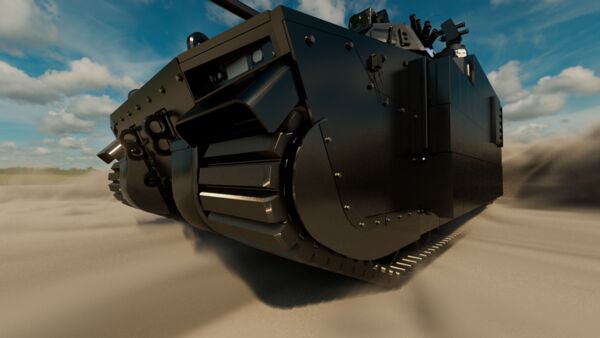
BAE Systems' OMFV offering will use composite rubber tracks. (BAE Systems)
BAE Systems announced on 30 November that it has teamed with Elbit Systems of America, Curtiss-Wright Corporation, and QinetiQ Limited for the US Army's Optionally Manned Fighting Vehicle (OMFV) programme.
The team used a new design because “we didn't see an existing vehicle that had the space and the growth” to meet army requirements, Jim Miller, BAE Systems' vice-president of business development, told reporters on 30 November. The platform weighs about 50 tonne (fighting weight) and can accommodate another 6,000 lb, Miller said.
Elbit Systems is providing its 50 mm Unmanned Turret (UT50) that uses a Northrop Grumman XM913 50 mm cannon, a high-capacity ammunition handling system, and third-generation FLIR sensors, the companies said in a statement. The OMFV design will use “a standardised, Modular Open Systems Architecture (MOSA), designed by BAE Systems and Curtiss-Wright Defense Solutions”, they added.
BAE Systems and QinetiQ Limited are developing and integrating a Hybrid Electric Drive (HED) technology with QinetiQ Limited's Modular E-X-Drive electric cross-drive transmission.
The design uses a series HED, as opposed to a parallel HED, team representatives said. For this, QinetiQ replaced the typical mechanical gearbox in the transmission with a design that, among other things, enables electrical power to be supplied via a generator, battery, fuel cell, or other sources to the transmission, said Mike Sewart, group chief technology officer at QinetiQ.
It can provide 9 hours of silent watch and 2.5 km of silent manoeuvre, Miller added. The vehicle's power output was withheld for competitive reasons, but Miller said it can grow to 700 kW of excess onboard power to accommodate future systems.
Looking to read the full article?
Gain unlimited access to Janes news and more...







